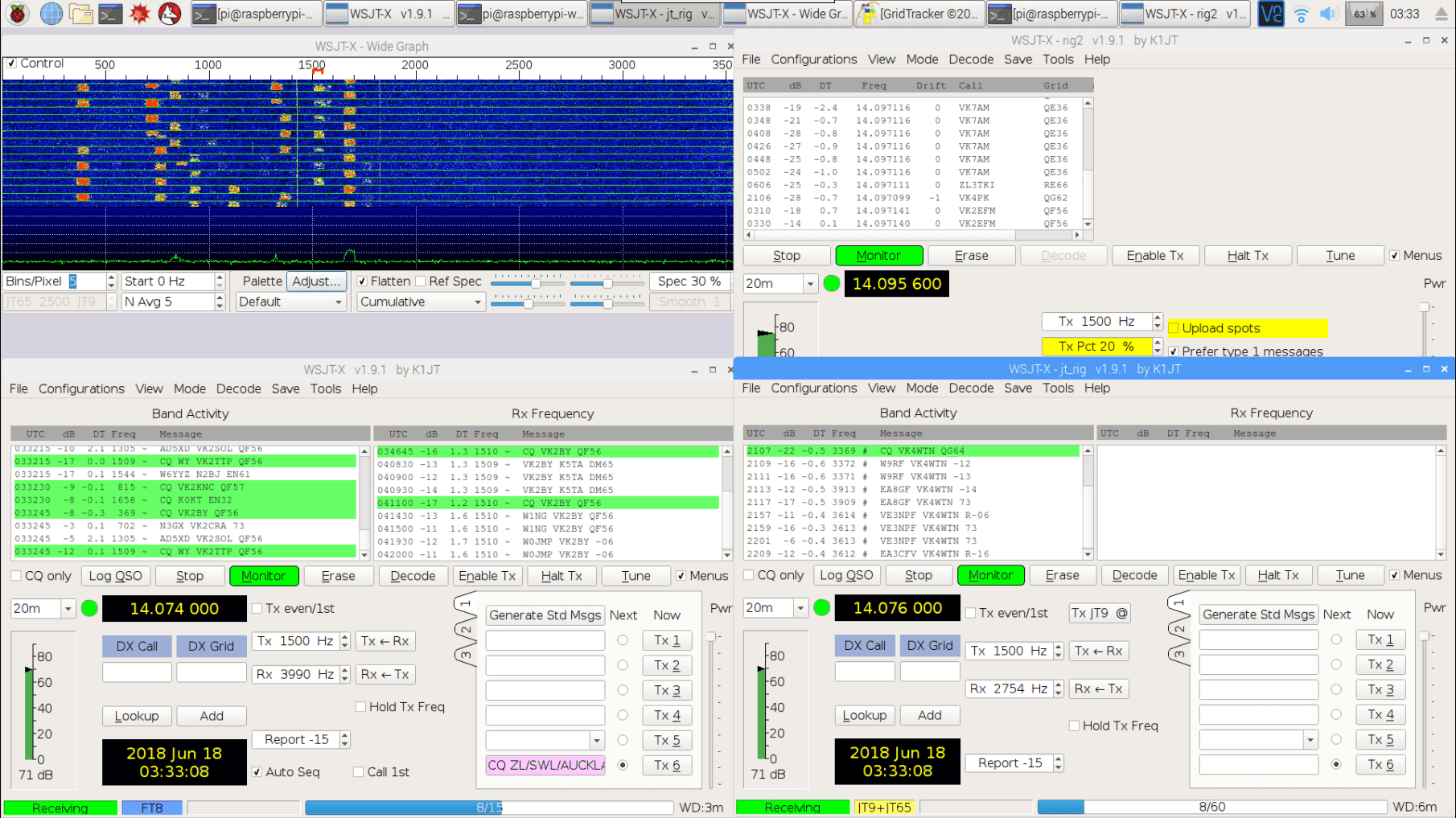

The next 47 seconds your radio is in transmit sending the report. You have 13 seconds to see it and either double click the acknowledgement or click on Send Report. Assuming the CQing station picks up your call, he has ~13 seconds to initiate the action which QSLs it from his end.
#Jt65 hf youtube full#
Your radio is transmitting for the full 47 seconds. You double click on their CQ in the list before it hits the top of the minute and the program sends your call back to them for 47 seconds. A JT65 cycle occurs as follows:ġ) On the top of each minute 47 second transmission occur.Ģ) There is a pause for 13 seconds which allows everyone to select their next actionĪ typical QSO is a station sends CQ and at 47 secs after each minute you can see what stations are calling. Using JT65-HF is essentially point-and-click. I watched a couple quick YouTube videos to get the idea and I was off and running. I did reduce the audio gain on the main screen until the signals were the only noticeable output on the waterfall. I have a SignaLink USB and just needed to select the SignaLink in the drop-downs for input and output devices. Configuration involved just specifying my call, grid square, soundcard input.output and PTT port. Installation and configuration was very straightforward for me.
#Jt65 hf youtube free#
I would suggest the free NetTime program at which installs as a Windows service. Some situations call for much higher power levels, but in day to day HF usage, 10 to 20 watts is probably enough, if not too much.You need to have accurate time and need a time check/sync program that is more frequent than one built into Windows. Often a few milliwatts will do amazing things. For use on HF you need to re-think your power levels.

Its primary purpose is to facilitate EME (Earth->Moon->Earth) communications. Much like any other audio input to an SSB transmitter JT65 can generate a poor signal if over driven. Avoid ALC action if possible with an AFSK signal. It uses AFSK and this is a critical distinction. JT65 is indeed an FSK mode in that it transmits distinct single tones from a tone set of 65 values.

Many have highly inaccurate clocks that gain/lose time at a substantial rate. If you can get (and maintain) accuracy within +/- 1 second of UTC you should be able to work other stations.
#Jt65 hf youtube manual#
If you do not have internet access your only option is to try to maintain a manual sync by some broadcast time service.

Trusting those methods will likely leave you routinely out of temporal sync and make your enjoyment (and others as well) of JT65 much lessened.
#Jt65 hf youtube software#
The built in time synchronization software with Windows XP (and beyond) is usually not sufficient to maintain a high degree of accuracy. You cannot successfully have a JT65 QSO without a close synchronization of your local computer's time value to UTC. First and most important is that of time synchronization.


 0 kommentar(er)
0 kommentar(er)
